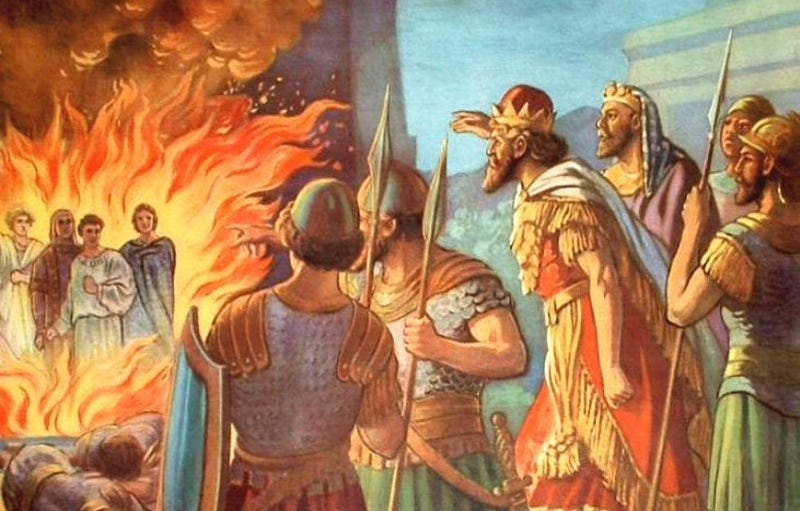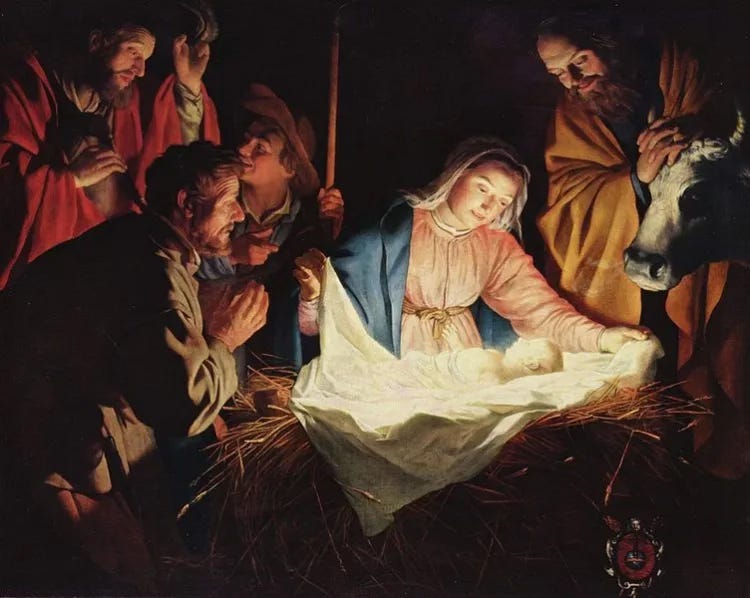The Trinity might top the list of Impossible Things to Completely Understand When You’re a Christian. The Westminster Shorter Catechism answer 6 asks and answers:
Q. 6. How many persons are there in the Godhead?
A. There are three persons in the Godhead; the Father, the Son, and the Holy Ghost; and these three are one God, the same in substance, equal in power and glory.
How does this work? As Philip Henslowe says to Hugh Fennyman in the movie Shakespeare in Love, “I don’t know. It’s a mystery.”
The Father is love—in essence and definition. He is the Creator and Initiator of the Great Rescue Plan. The Holy Spirit is the Helper, the Rememberer When We Forget, the God Dwelling Inside of Us Always.
Today we turn our attention to the Son. He’s given the name Jesus, meaning “God saves” (Matthew 1:21). He’s also called Immanuel, meaning “God with us” (Matthew 1:23). His names sum up the role He plays in this grand story God is telling. Jesus came to be with us and to save us.
Undercover Appearances
Like the Holy Spirit, the Son is with God at the creation of the world, and He makes several covert appearances in the Old Testament. Bible scholars call these “christophanies,” a combination of the word “Christ” with the Greek word “phaino,” meaning “to appear or reveal.” My favorite christophany is found in Daniel 3, when three of God’s faithful servants refuse to bow down to the evil king Nebuchadnezzar. In his fury, this king orders Shadrach, Meshach, and Abednego to be thrown into a fiery furnace:
He ordered the furnace heated seven times more than it was usually heated. And he ordered some of the mighty men of his army to bind Shadrach, Meshach, and Abednego, and to cast them into the burning fiery furnace. Then these men were bound in their cloaks, their tunics, their hats, and their other garments, and they were thrown into the burning fiery furnace. Because the king's order was urgent and the furnace overheated, the flame of the fire killed those men who took up Shadrach, Meshach, and Abednego. And these three men, Shadrach, Meshach, and Abednego, fell bound into the burning fiery furnace.
-Daniel 3:19-23
Can you imagine? A fire so hot, men died just standing near it. The surprise comes next. A report is given to the king that the three men were walking in the midst of the fire, unharmed. In fact, they weren’t alone:
Then King Nebuchadnezzar was astonished and rose up in haste. He declared to his counselors, “Did we not cast three men bound into the fire?” They answered and said to the king, “True, O king.” He answered and said, “But I see four men unbound, walking in the midst of the fire, and they are not hurt; and the appearance of the fourth is like a son of the gods.”
-vs. 24-25
It’s believed that this fourth person is Jesus, appearing miraculously before He took on His human form. This story is powerful because it serves as a metaphor for everything Jesus does and represents while on earth.
Made Flesh
Jesus is the tangible incarnation of God Himself. He is fully God and fully man, holy, perfect, and sinless in every way. How can He be both? It’s another one of those mysteries.
That Jesus was a man made of flesh and blood was one of the most important realities for the apostle John. He begins his letter:
That which was from the beginning, which we have heard, which we have seen with our eyes, which we looked upon and have touched with our hands, concerning the word of life— the life was made manifest, and we have seen it…
-1 John 1:1-2a
John saw Him with his eyes. He touched Jesus. He ate with Him. This means that Jesus also experienced everything we experience on this earth: hunger, sickness, fatigue, and loneliness. Christianity is the only religion that has God Himself coming down to join mankind in its misery.
Jesus didn’t come in the flesh as a casual observer of humanity. He participated in the suffering. He hungered for 40 days in the wilderness (Matthew 4), He healed the sick and cast demons out of the possessed (Matthew 8). The apostle Matthew writes:
This was to fulfill what was spoken by the prophet Isaiah: “He took our illnesses and bore our diseases.”
-Matthew 8:17, quoting Isaiah 53
Indeed, He bore it. It cost Him greatly to restore the world through these individual healings and miracles. It ultimately led to His crucifixion, where His real human body suffered horrifically before dying a real death. He took our place. He died our death.
On Our Behalf
Yet because He is also fully God, His death accomplishes something powerful:
Anyone who does not love does not know God, because God is love. In this the love of God was made manifest among us, that God sent his only Son into the world, so that we might live through him. In this is love, not that we have loved God but that he loved us and sent his Son to be the propitiation for our sins.
-1 John 4: 8-10
The word “propitiation” is a fancy church word. In Greek, it is “hilasmos,” meaning “atoning sacrifice, the means of forgiveness.” In other words, Jesus’ death pays the penalty we owe to God for our sins. Because He is sinless, He’s the only one to do it. For the Jewish people, this meant Jesus became the sacrificial lamb, destroyed on their behalf.
It’s crazy when you think about it…God Himself dies for His sinful people, to spare us from the death we actually deserve .
The whole of the Trinity works together to accomplish God’s good purposes, primarily for His own Glory, but also of our good. What is our response to such a work?
We love because he first loved us.
-1 John 4:19
Love. The beginning, middle, and end of everything.
Coming up next week, we’re entering the season of Lent. It’s a long stretch of time, people, given as a gift to us every year. During these weeks, you are invited to fast, to pray, and to consider the human life and suffering of Jesus as we prepare for the celebration of Resurrection Sunday. I chose to end this short series with a glimpse of Jesus, knowing that in the next few weeks we will be walking with Him. Would you join me on the road to Jerusalem?







